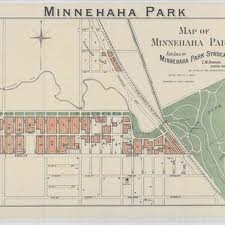

The Church of the Annunciation in Minneapolis is a Roman Catholic parish that was attended by my family starting in 1969 when we moved to south Minneapolis. The church is located at 509 West 54th Street near the corner of Diamond Lake Road and Lyndale Avenue.
The following history is from Annunciation's website:
"The parish of Annunciation was created by Archbishop Dowling with the appointment of the Rev. Francis J. Lang, as pastor, on September 8 1922. Most of the pioneer parishioners were young and middle-aged couples, many with children. Before 1922, most of the people in this area worshipped at Incarnation parish to the north and Assumption parish in Richfield to the south. The first parish Mass was offered on October 1, 1922."
"Within a year, this young community occupied the first rooms of a new church-school building, which still serves our community well. On August 5, 1923 the first liturgy was offered in the building and on September 10, 1923, four Dominican Sisters opened Annunciation School, with 72 pupils."
"The Post-War Boom, 1945-1960, brought the challenge of rapid population growth and expansion. On December 16, 1962 the first Mass was offered by the community in its new worship space."
I remember the big summer rummage sales in the school gymnasium in the summer in the 1970's and I remember the parish festival, Septemberfest, which I believe began in the 1980's. Dad contributed a lot of time and effort to the set up and take down of that festival.







 Minnehaha Falls is located in beautiful Minnehaha Park. Our family went on picnics there with our Uncle Henry, Aunt Paula and their children and also on picnics for church. The falls are beautiful in the summer but also beautiful frozen in the winter as well. The park is a pleasant
Minnehaha Falls is located in beautiful Minnehaha Park. Our family went on picnics there with our Uncle Henry, Aunt Paula and their children and also on picnics for church. The falls are beautiful in the summer but also beautiful frozen in the winter as well. The park is a pleasant 










 Dale and I had dinner at Bank Restaurant in Downtown Minneapolis tonight. At left are pictures of Wells Fargo Center. The bottom picture was taken on February 12, 2011 with my iPhone from the street across from the restaurant. I love the Wells Fargo tower which was formerly called Norwest Center. It was built in 1988.
Dale and I had dinner at Bank Restaurant in Downtown Minneapolis tonight. At left are pictures of Wells Fargo Center. The bottom picture was taken on February 12, 2011 with my iPhone from the street across from the restaurant. I love the Wells Fargo tower which was formerly called Norwest Center. It was built in 1988. Population 1960: 482,872
Population 1960: 482,872
